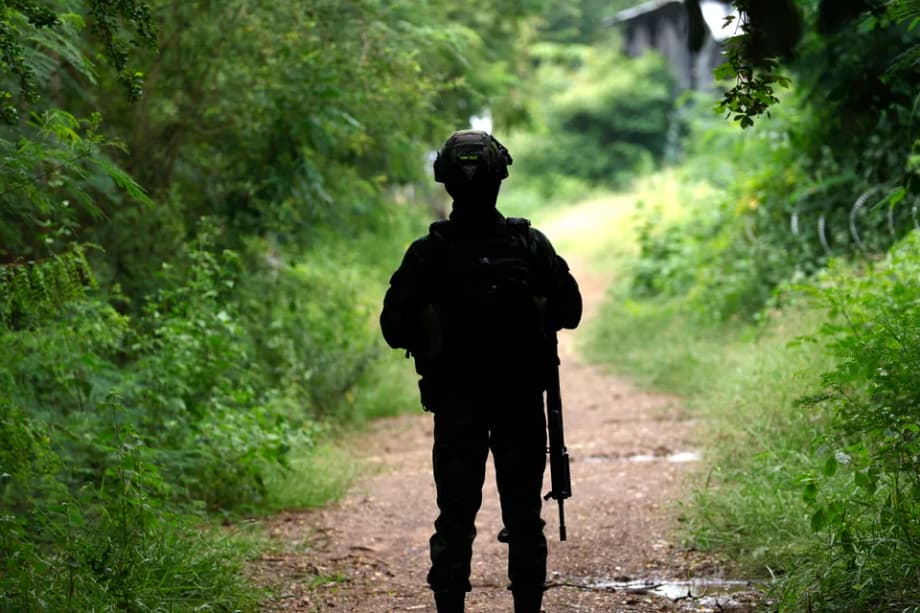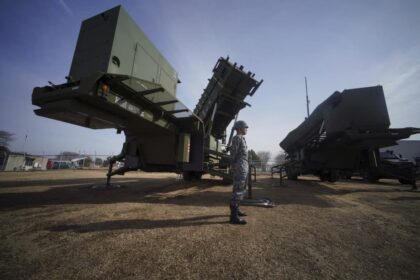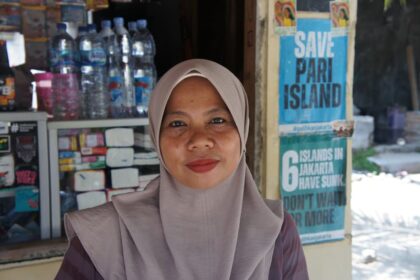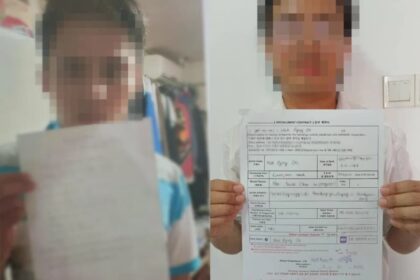A night of fear in Prey Chan and Chouk Chey
Since the night of October 10, families in Prey Chan and Chouk Chey, two Cambodian villages in Banteay Meanchey province, have been jolted awake by loud recordings of wailing voices, engine roars, dogs howling, and funeral music carried over from the Thai side of the border. The broadcasts arrive late at night, sometimes in the early morning, and they have turned bedtime into a period of dread for children and parents alike.
- A night of fear in Prey Chan and Chouk Chey
- What residents say they heard
- Why children are uniquely vulnerable
- The legal debate over psychological operations
- Who is driving the broadcasts and what do we know about motives
- Thai responses and regional diplomacy
- Noise as a weapon, and lessons from past conflicts
- What communities and authorities can do now
- Key Points
Child protection groups in Cambodia say the nightly noise is taking a serious toll. They report that children are crying at night, suffering nightmares, and refusing to attend school the next day. Teachers describe tired, jumpy classrooms. Parents, unsure of what is happening, are keeping kids home out of fear. These accounts have triggered a rare appeal to the United Nations from the Cambodian Human Rights Committee, which alleges a campaign of psychological harassment directed at frontier communities.
Officials in Phnom Penh have asked the ASEAN Interim Observer Team to help verify the broadcasts, while Cambodia’s Ministry of National Defence has dispatched a field mission. On the Thai side, a prominent senator has urged an inquiry and warned that scaring civilians can breach global rules that protect people from psychological abuse. The Thai army has defended its psychological operations along the frontier as security measures to counter misinformation and illegal activity and says it is committed to transparency.
At the heart of the dispute are reports that a Thai social media figure, known for nationalist content, helped spark or amplify the late night noise. Cambodian leaders and monks argue that weaponizing sound to frighten civilians crosses moral and legal lines, especially when children are affected. The case has now become a test of border diplomacy, humanitarian norms, and the responsibility of online influencers who operate in contested spaces.
The controversy comes amid tension along parts of the Cambodia Thailand boundary after months of disputes over land demarcation and demining work. Videos of the broadcasts have circulated widely on social media, magnifying fear in neighboring communities that do not hear the sounds directly but now anticipate them. Local authorities and child advocates worry that rumor and speculation on phones may intensify fear for young people who already feel unsafe at night.
What residents say they heard
Residents describe a chilling mix of noises that seems designed to unsettle. Some recordings resemble wailing human voices, others sound like aircraft taking off or animals in distress. Several villagers say the broadcasts spike in volume after midnight and then return in the small hours around 3:30 am. Children struggle to fall asleep, and those who do often wake up panicked.
Pov Boeun, the chief of Prey Chan village, said the nightly barrage has disrupted daily life for families who rely on solid rest to farm, study, and work.
He said: “The sounds are ghostly and unnatural, and they make it very hard for young children to sleep.”
In nearby households, older residents with long memories of conflict say they can endure loud nights more easily than young ones, but they worry about the long strain on children and the sick. One elderly villager said the village has endured several nights of little or no sleep and that people now dread nightfall.
Why children are uniquely vulnerable
Child psychologists and child rights groups warn that repeated exposure to frightening sounds at night can trigger anxiety, sleep disorders, and stress reactions in children. Nighttime fear can turn into bed avoidance, constant vigilance, and panic symptoms. It can make classrooms harder places to learn because the brain functions that support attention and memory are compromised by poor sleep.
Yan Lay, executive director of Child Rights Coalition Cambodia, said that persistent noise is causing serious harm to young people in the area.
He said: “Frightening and unsafe noises disrupt children’s sleep, often causing nightmares and panic attacks at night.”
Research on conflict and displacement shows that children and other vulnerable groups face a high risk of anxiety, depression, and stress when they are exposed to traumatic events or constant fear. The World Health Organization estimates that roughly one in ten people affected by conflict will develop serious mental health problems, with another one in ten experiencing behavioral issues. Studies from past crises involving Cambodian communities have documented long lasting trauma alongside resilience, with outcomes shaped by family support, community cohesion, faith practices, and access to care.
The current reports from Banteay Meanchey reflect classic warning signs. Children are crying at night, clinging to parents, and avoiding school. Parents who lack clear, credible information sometimes fill gaps with speculation or rumors, which spreads fear among peers. Experts advise parents and caregivers to listen to children carefully, explain what is known in clear language, and avoid exaggeration. Schools can help by providing trusted adults for children to talk to and by restoring steady routines in the classroom.
The legal debate over psychological operations
Cambodian officials and civil society groups say the broadcasts violate international law because they appear intended to intimidate civilians. They point to treaties that apply regardless of whether there is open fighting. The Convention Against Torture prohibits acts that intentionally inflict severe mental suffering when carried out by, or with the consent of, public officials. The International Covenant on Civil and Political Rights bars cruel, inhuman, or degrading treatment. The Convention on the Rights of the Child requires that states protect children from all forms of mental violence.
Keo Remy, president of the Cambodian Human Rights Committee, has asked the United Nations human rights office to investigate and to send observers to the frontier. In his letter, he cited recordings and testimony from villagers about the timing and content of the broadcasts.
He wrote: “Wailing ghosts were broadcast through loudspeakers in the late evening before midnight and early morning around 3:30 am.”
In Bangkok, Senator Angkhana Neelapaijit urged authorities to look into the role of influencers and any official involvement, warning that frightening civilians can cross legal lines meant to protect their dignity and mental health.
She said: “Any action that instills fear or affects the mental well being of civilians, especially vulnerable groups, may constitute psychological torture.”
Legal experts say that whether the broadcasts meet the definition of torture depends on intent, severity, and whether state agents were involved. If government forces or authorities authorized or supported the activity with the purpose of intimidation, it could qualify under the Convention Against Torture. If not, repeated and severe broadcasts aimed at civilians could still be judged as cruel or inhuman treatment under other human rights rules. Either way, actions that deliberately harm children’s mental health breach widely accepted norms.
Who is driving the broadcasts and what do we know about motives
Cambodian authorities and local reports have linked the noise to a Thai social media influencer, Guntouch Pongpaiboonwet, known online as Gun Jompalang. He has promoted nationalist messages and has appeared at the frontier. Cambodian officials also allege that local Thai authorities and military units worked with him or allowed the activity to go forward. These claims will be tested by the ongoing observer and diplomatic process.
Motives matter. If the goal is to frighten villagers off farmland near contested demarcation lines, it would represent an attempt to use fear to change civilian behavior. If the broadcasts form part of a wider information battle linked to land clearing and security operations in Thailand’s Sa Kaeo province, the legal and political consequences could extend well beyond the immediate area. Viral videos have already magnified the message within Cambodia, spreading worry far from the frontier.
Thai responses and regional diplomacy
Thai military officials have defended their psychological operations along the border. They say such measures are aimed at maintaining security, countering misinformation, and stopping illegal activity such as smuggling and unauthorized crossings. The army has said its actions comply with international standards and that it will cooperate with stakeholders to keep peace and order along the boundary.
Regional mechanisms are now engaged. Cambodia’s Ministry of National Defence has sent a field mission, and the ASEAN Interim Observer Team is involved in verification. Phnom Penh has said that findings will be documented and shared through diplomatic channels. The goal is to establish what happened, reduce harm to civilians, and reduce tensions.
Thai public figures have also weighed in. Senator Angkhana has called for an inquiry, and well known journalists have warned that scaring neighbors damages Thailand’s reputation. Those voices reflect a broader debate inside Thailand about how security agencies and online personalities should behave near sensitive borders.
Noise as a weapon, and lessons from past conflicts
Sound has long been used to influence behavior during disputes. Along the border between North Korea and South Korea, both sides have employed loudspeakers to broadcast propaganda and music. Militaries have used alarms, sirens, and industrial noise to unsettle opponents. In civilian settings, such tactics carry special risk because they affect children, the elderly, the sick, and people with disabilities more intensely than healthy adults.
The Cambodian border communities now reporting sleepless nights include families with memories of past violence. Studies of Cambodians who lived through war and displacement show high rates of trauma years after the events. Some older villagers may feel more prepared to cope than children because they have experienced hardship before, yet cumulative stress can still cause harm, especially if sleep is broken for many nights in a row.
Evidence from humanitarian settings indicates that strong family bonds, clear information, and access to mental health support can limit damage. Simple steps like sleep routines, child friendly spaces for play and expression, and contact with trained counselors or volunteers reduce fear and help children regain a sense of control.
What communities and authorities can do now
Child focused responses are urgent when fear lingers after dark. Parents and caregivers can start by acknowledging that the noises are frightening and by explaining that adults are working to stop them. Children should be invited to describe how they feel in their own words. Regular bedtimes, quiet wind down routines, and reduced screen use near bedtime help restore sleep. Schools can set aside time for small group discussions, art, or play that lets students process fear in a safe setting.
Local leaders can designate spaces for community dialogue and invite health workers or trained volunteers to share practical guidance. Civil society groups in Cambodia have experience running low cost programs, from psychoeducation to games and creative activities for children, often in temporary shelters during border crises. Those activities promote expression and rebuild a sense of safety without requiring specialized clinics. When symptoms such as persistent nightmares, panic attacks, or withdrawal continue, families should be directed to counselors or mental health services for follow up.
Authorities on both sides of the border can also reduce harm by issuing clear, consistent public information. That includes explaining what is known, discouraging rumor sharing, and providing parents with advice on supporting children. Stronger moderation of misleading or sensational content online, especially material that exaggerates the nature of the broadcasts, can curb unnecessary alarm. At the diplomatic level, transparent verification, a public commitment to cease any civilian directed noise, and a hotline between local commanders could bring relief quickly.
Key Points
- Since October 10, recordings of wailing voices, animal sounds, engines, and funeral music have been broadcast into Cambodian villages from the Thai side of the border at night.
- Child advocates report nightmares, panic, and school avoidance among children in Prey Chan and Chouk Chey in Banteay Meanchey province.
- The Cambodian Human Rights Committee has asked the UN to investigate and has called the broadcasts psychological intimidation of civilians.
- Thailand’s army defends psychological operations as security measures, while a Thai senator has urged an investigation and warned of possible violations of international law.
- Cambodian officials link the broadcasts to a Thai social media influencer, and observer missions and diplomatic channels are assessing the claims.
- Mental health research shows children exposed to conflict and fear are at higher risk of anxiety, depression, and sleep disorders, though supportive families and schools can reduce harm.
- Experts urge clear communication with children, community spaces for expression, and rapid steps by both governments to stop civilian directed noise and verify facts.












